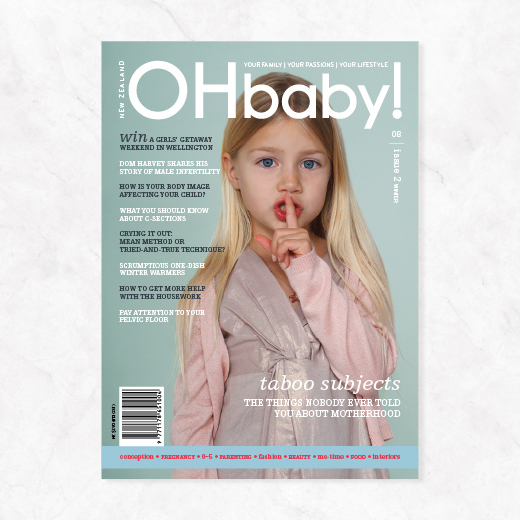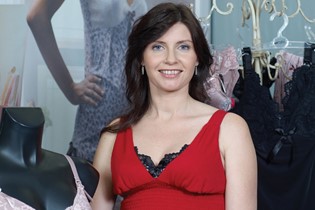Breastfeeding and bottle-feeding

For the majority of women, whether to breastfeed or not is never even a question. But why is breastfeeding so good for both the mother and her baby? And when breastfeeding isn't an option, what's a mum to do? Angela Pedersen investigates breastfeeding and bottle-feeding.
I was so excited when I found out that I was pregnant with my first daughter, Ella. I read all the books, studied the weekly pregnancy updates on the OHbaby! website, and my husband Royce and I had great fun dreaming about what life would be like with our new baby. I planned to breastfeed, but I remained open-minded: If it didn't work out, I'd just bottle-feed, simple as that.
However, as the birth grew nearer, and visits to my midwife became more regular, I began to realise that it wasn't quite so simple. Reading the phrase "breast is best" in a book or on a website didn't carry quite the same weight as when it was coming from the medical professional I was trusting with my baby's well-being.
I soon got the feeling that bottle-feeding was not the easy solution I'd thought it to be. In fact, it wasn't really considered acceptable at all - and that raised questions for me. Even after I went on to successfully breastfeed Ella, and, a few years later, breastfed my second daughter, Eva, my questions remained.
Why is bottle-feeding frowned upon? Has it always been that way? What is it that makes breast milk such a "super food"? And if bottle-feeding is so frowned upon, why do people still do it?
A historical perspective
Up until the 19th century, almost all babies were breastfed; if not by their own mothers, then by a "wet nurse": A woman who was lactating, and who may have been feeding several babies at any one time. It wasn't until the Industrial Revolution, which saw more women in paid work, that bottle-feeding began to become a popular choice.
In 1867, Henri Nestlé patented the first specialised infant formula, offering women a greater choice when it came to feeding their babies. A century later, by the mid-1960s, only around 18% of western women breastfed their babies on discharge from hospital after birth. This was further impacted by the social stigma that had become attached to breastfeeding. Many women felt uncomfortable breastfeeding in front of "company", even their husbands, and it was certainly not acceptable to breastfeed in public.
In the last 20 years, however, breastfeeding has seen a great resurgence, with studies identifying its many benefits for both babies and their mothers. In fact, not only has breastfeeding regained its popularity, it has overtaken bottle-feeding as the preferred method of infant feeding among new mothers.
Breast is best
It's the message that is drummed into us almost from the very moment we find out we are pregnant, and rightly so. Make no mistake, the research is conclusive: breast is best. There are so many advantages to breastfeeding, not just from a nutritional perspective, but also because of the unique bonding experience that breastfeeding offers for a mother and her baby. Here are a few of the advantages:
• Breast milk is the most easily digestible food for baby. The lining of the newborn stomach is permeable, and artificial food sources can irritate it, and even lead to the development of food allergies and intolerances. Breast milk, on the other hand, is the perfect composition for the newborn stomach and provides all the nutrients your child needs.
• Maternal immunity can be passed through breast milk. Breast milk, in particular the colostrum that occurs during the few days after the baby's birth, contains antibodies from the mother which are passed to the baby, helping the baby to build and maintain a natural immunity in the first weeks when the baby immune system is immature and still developing.
• Breastfeeding assists the mother's body to return to normal after birth. In the early days, your baby's suckling at the breast causes the uterus to contract, helping it return to its pre-pregnancy size more quickly, and reducing the chance of a postpartum haemorrhage. It has also been proven that breastfeeding helps your body to naturally shed pregnancy weight gain.
• Breastfeeding offers a bonding experience like no other. The unique skin-to-skin contact that occurs during feeding helps to build the relationship between mother and baby, and studies show that women who breastfeed report fewer attachment and bonding issues with newborns than those who bottle-feed.
• Breastfeeding is convenient. In the middle of the night, when your baby wakes for a feed, there's no need to stumble around the kitchen in the dark sterilising and preparing bottles. Breast milk is available on demand at the perfect temperature. It's also portable - no worrying about safely transporting and preparing formula when you are out and about.
• Breast milk is safer. Unlike formula, breast milk is sterile. Formula-fed babies have a slight risk of becoming sick due to incorrect preparation of formula, or incorrect sterilising procedures.
• Breastfeeding may lower the risk of SIDS. Some studies have shown that babies who are breastfed are at lower risk of dying from Sudden Infant Death Syndrome (SIDS, also known as cot death). Ongoing research is being carried out in this field.
Protecting breastfeeding in New Zealand
The New Zealand Ministry of Health subscribes to the World Health Organization's (WHO) recommendations regarding breast-feeding, including introducing the WHO/Unicef Baby Friendly Hospital Initiative, which promotes establishment and maintenance of exclusive breastfeeding. In New Zealand, the Baby Friendly Hospital Initiative is overseen by the New Zealand Breastfeeding Authority (NZBA), and a large number of New Zealand hospitals and birthing units have been certified as Baby Friendly Hospitals since the program was launched here in 2000. The Baby Friendly Hospitals Initiative identifies 10 steps to successful breastfeeding, which recommend that every facility providing maternity services and care for newborn infants should:
1. Have a written breastfeeding policy that is routinely communicated to all healthcare staff.
2. Train all healthcare staff in skills necessary to implement this policy.
3. Inform all pregnant women about the benefits and management of breastfeeding.
4. Help mothers initiate breastfeeding within a half-hour of birth.
5. Show mothers how to breastfeed, and how to maintain lactation even if they should be separated from their infants.
6. Give newborn infants no food or drink other than breast milk, unless medically indicated.
7. Practice rooming-in - allow mothers and infants to remain together, 24 hours a day.
8. Encourage breastfeeding on demand.
9. Give no artificial teats or pacifiers (also called dummies or soothers) to breastfeeding infants.
10. Foster the establishment of breastfeeding support groups and refer mothers to them on discharge from the hospital or clinic.
All of this is carried on into the community after new mothers are discharged from hospital, initially by their Lead Maternity Carer (LMC), and then by their Well Child Provider. Many District Health Boards provide funding for women experiencing difficulties with breastfeeding to have one or more consultations with a specialist lactation consultant. The Plunket Society runs Family Centres in some areas, where women can go and spend the day with qualified Plunket and Karitane nurses observing their feeding techniques and offering support and advice.
So why not breastfeed?
If breastfeeding is so good, and breast milk the perfect food for baby, then why is bottle-feeding even an option? It seems simple - all mothers want the best for their child; therefore, they should choose breastfeeding.
And most mothers do choose breastfeeding. Relatively few women select bottle-feeding as their first choice. For most, the decision to switch from breast to bottle is one that takes much soul-searching and more often than not necessity.
For a small percentage of women, breastfeeding is never going to be an option. This includes those who have experienced breast cancer and had one or both breasts removed, and those who have had breast surgery such as a breast reduction or enlargement. It also includes those who have medical conditions requiring them to take certain medications which are known to be potentially harmful to baby when passed through breast milk.
For the majority of women, though, the decision to bottle-feed is a secondary one, and one which follows days, weeks, or even months of trying to establish breastfeeding. There are a number of factors which can make establishing breastfeeding difficult, including:
• Lack of support in the immediate postnatal period.
• Physical problems such as cracked nipples, inverted nipples, mastitis (breast infections) and engorgement.
• Issues with baby such as a tongue tie, cleft lip or palate, or prematurity (premature babies often have underdeveloped sucking reflexes and have to be taught to feed).
• Problems related to the delivery of the baby, such as a difficult birth or Caesarian section.
• Having a multiple birth.
• Poor weight gain/failure to thrive in the baby.
• Allergies and diet-related issues - some babies are incredibly sensitive to particular foods, and can react to foods in the mother's diet when they are passed through breast milk.
• Psychological and mental-health issues, including exhaustion and postnatal depression.
It is important to note that while these factors can make establishing breastfeeding difficult, they don't make it impossible, and with the right support and encouragement, most of these things can be overcome.
However, in the hormonal haze of those early weeks, life can be very stressful, and feeding is one area over which new parents do have control. It also allows someone else (such as your partner) to help with the feeding, giving you a break.
Making the decision
The moment you make the decision to switch from breastfeeding to bottle-feeding is one that will be ingrained in you forever. Regardless of your reasons for making the decision, the sheer weight of emotions involved can be overwhelming.
The most important thing to consider is that once you have stopped breastfeeding, it is very difficult to reverse your decision, so you need to be 100% certain about it. Your milk will dry up within a couple of weeks, and many babies also refuse to latch on to the breast once they have become used to a bottle. If you do change your mind, it is possible to relactate (build your milk supply up again once you have stopped breastfeeding), but this is a time-consuming and difficult process, and, unfortunately, is rarely successful.
You will also find it easier to come to terms with bottle-feeding on an emotional level if you address the reasons why you are stopping breastfeeding, and identify any possible solutions that might allow you to keep breastfeeding. If you can say for certain that you have addressed these issues, you are less likely to experience guilt, and to find yourself constantly wondering, "What if I had tried…"
It's also important, however, to try and keep some perspective. Society and science both tell us that breast is best, and undoubtedly your baby will benefit from continued breastfeeding.
But if it's not working, it's not working, and while you might feel that everyone is judging you at the time, in a few years when you watch your child playing in the playground with other children, no one will be able to tell at a glance which of those children were breastfed and which were bottle-fed.
The first step
It is important to seek advice from your healthcare professional when you have to consider bottlefeeding. This may be your midwife, Plunket nurse, GP or a paediatrician. The Ministry of Health has developed a Code of Practice for Healthcare Professionals when dealing with the subject of infant feeding, and while its main purpose is to promote and protect breastfeeding as the best way to feed your baby, it is also clear in the obligations it sets out for healthcare professionals when dealing with women who, whether by choice or other circumstance, bottle-feed their babies.
The Code states that mothers who do not breastfeed their infants should receive the same attention from health workers and the healthcare system, and that if a health worker should feel that he or she is unable to provide information about formula-feeding, he or she has an obligation to refer the mother and child on to an appropriate person who can. Similarly, if you feel that your healthcare professional is not providing you with appropriate information, don't be afraid to ask to be referred on to someone else.
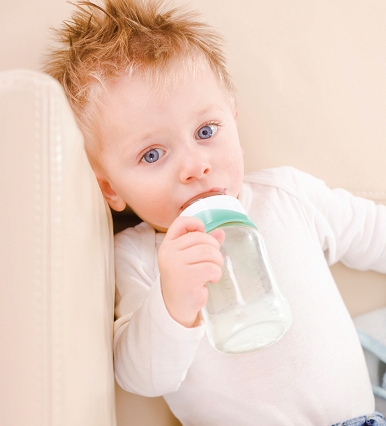
Choosing a formula
Just as every woman's breast milk has a unique composition, there is no one-size-fits-all option when it comes to infant formulas. There are a number of different types of formulas available, and when you first start out, it can seem overwhelming.
Finding a formula which suits your baby will probably be a process of trial-and-error. Experts recommend allowing at least two weeks for your child to adapt to a particular formula to allow for any potential side effects to present themselves, before switching to a different type or brand. The exception to this, of course, is if your child has an allergic reaction.
Types of formulas
There are three main categories of infant formula. Starter formulas are developed for infants from birth, follow-on formulas are developed for infants from the age of six months, and toddler formulas are developed for children over the age of 12 months.
Within each category, there are a number of different types of infant formula. Here is are some of the more commonly available ones:
• Whey-dominant. In the early months, breast milk is made up predominantly of whey proteins, and whey-dominant formulas offer a similar level of whey protein to breast milk, so are fairly easily digested. The majority of starter formulas are whey-dominant.
• Casein-dominant. Casein is a denser protein, and casein-dominant formulas are designed for hungrier babies as the proteins take longer to digest. Selected starter formulas are casein-dominant, as are the majority of follow-on and toddler formulas.
• Goat's milk. Based on goat's milk proteins instead of cow's milk proteins, goat's milk formula is believed to have the closest composition to breast milk of all infant formulas.
• Soy. Based on soy proteins, soy formulas are completely free of cow's milk proteins. They are an alternative for infants with cow's milk protein allergy, but you should discuss this with your health professional before switching to a soy formula, as current New Zealand practice does not recommend soy as a sole form of nutrition for infants under one year of age.
• Lactose-free. This is a cow's milk protein-based formula which has had the lactose (milk sugars) removed. Some babies find these milk sugars difficult to digest, so beneit from a lactose-free formula; however, it is again important to discuss this with your health professional.
• Thickened/Anti-Reflux. A small number of babies suffer from reflux or "spilling", which is where the valve at the top of the esophagus doesn't seal properly and they regurgitate after feeds. These babies often respond well to a thickened formula as it is less easily regurgitated.
Other nutrients in formula
In addition to the different types of formulas available, infant formula manufacturers also add a number of other nutrients.
These include:
• Probiotics/Bifida. These are healthy bacteria normally found in the human gut which promote a healthy digestive system. These probiotics occur naturally in breast milk, but have to be added to formula.
• Nucleotides. These are nutrients which help boost the immune system. Again, these occur naturally in breast milk, but have to be added to formula.
• Beta Carotene. Beta Carotene is an antioxidant, also found in breast milk, which has been found to boost the immune system.
• Omega 3 DHA and Omega 6 AAs. These are essential fats believed to aid brain, vision and nerve development. These are not added to the standard range of infant formulas, but are added to the "gold" range available in some brands.
Fact file:
Allergies to infant formulas
The incidence of cows' milk protein allergy in infants has greatly increased in New Zealand over the past few years. Most of the infant formulas available commercially are based on either whey or casein, which are both cows' milk proteins, and if your child has an allergic reaction to one brand, it is almost a certainty that he or she will react to all cows' milk protein-based formulas. Signs of an allergic reaction include hives, swelling of the mouth, lips and tongue, difficulty breathing, eczema and other skin rashes. If you suspect your child is having an allergic reaction, seek immediate medical advice, and do not offer him/her any more formula without first consulting with a doctor who specialises in allergies. There are non-cows' milk protein-based formulas available; some, such as soy, are available over the counter, and others are only available on prescription. You should discuss your options with your doctor before trying one of these alternatives.
Next time around
In the absence of any major medical issues, just because you have not been able to successfully breastfeed one baby does not mean that you will not be able to breastfeed any subsequent babies. The key is preparation. For example, if your reason for giving up breastfeeding the first time was due to cracked nipples or mastitis, talk to your Lead Maternity Carer (LMC) about ways to avoid this.
Some problems, such as a premature baby are unlikely to be repeated and you might find breastfeeding relatively easy to establish second time around. The La Leche League offers support to women during pregnancy to help improve their breastfeeding experience, including regular support groups, telephone support and a library of breastfeeding resources.
The 'breast is best' message seems to be getting through to New Zealand mums. But what happens when you can't breastfeed? Three mothers share with Emma Fahy why they chose to breast-feed or bottle-feed their children, and how it worked for them.
Mel's story 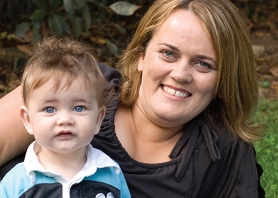 Mel Bannister-Miller is mum to Conor (12), Nyah (5), and Cooper (7 months). Cooper has been exclusively bottle-fed since he was three months old.
Mel Bannister-Miller is mum to Conor (12), Nyah (5), and Cooper (7 months). Cooper has been exclusively bottle-fed since he was three months old.
When she was pregnant with her third child, it never occurred to Mel Bannister-Miller that she might not be able to breastfeed him.
Having successfully breastfed her two older children, Conor and Nyah, she assumed that she would breastfeed the new baby as well.
But Mel says that, from the beginning, things with Cooper were different. "Cooper arrived a week early," she says. "It was totally unexpected. And he was only 3250g (7lb2oz), a lot smaller than his brother and sister had been."
After a good first feed in the delivery ward, Mel and Cooper transferred to the maternity unit. "I was incredibly lucky with the wonderful midwives I had to look after me. They were so supportive and patient. We did have some latching issues, but once Cooper was latched on, it was okay. On the second night things fell apart a bit. I couldn't get him to latch and I was exhausted, but the midwives were encouraging and I went home feeling confident that we would get the hang of the latching."
But things didn't get better once they got home. "It wasn't going well," Mel recalls. "My nipples were sore and cracked, and Cooper and I both spent that night in tears. Every time I got him to sleep, he'd wake up again. I really felt like chucking it in."
Around the third week, Cooper was referred to a paediatrician as he was still not gaining enough weight, and he had jaundice that wasn't improving. It was the paediatrician who suggested formula, but Mel wasn't convinced. "I talked to my husband, Craig, and my midwife about the formula. I felt really torn. I felt like my body was letting me down in the worst way imaginable."
So she decided to compromise. After discussion with her midwife, Mel decided to express one feed per day and give it to Cooper in a bottle at night. She started using an electric pump, but uncertainty over when, how often, and how much to express wreaked havoc on her milk supply and took an emotional toll.
"By day 26, Cooper was having two formula feeds in addition to breastfeeding, and I was just so happy that he was gaining weight," Mel says. "But I was still expressing, and I was starting to resent it. Being tied to this machine made me miserable, and having Craig come home and ask how much I had expressed was even worse. I was ready to give up."
After being discharged by her midwife when Cooper was five weeks old, Mel had no further contact with health professionals until Cooper was eight weeks old. "Those three intervening weeks were the hardest, loneliest weeks of my life," she admits. "Perhaps if I had seen a lactation consultant, or received help from my health visitor, I might still be breastfeeding him now.
" When Cooper did have his eight-week checkup, Mel felt she had to justify why she was giving her son formula. But she re-evaluated their situation and by the time he was three months old, Cooper was fully formula-fed. However, even with support from her health visitor, Mel still wasn't totally comfortable with her decision.
"I found it harder to bond with Cooper than I did with my older children, and I blame the feeding problems for that. I had to work a lot on bonding with him: I would bottle-feed him really close to my chest to mimic the closeness of breastfeeding; I'd have skin-to-skin contact with him; I did everything that I could think of to create the bond I thought we'd lost."
Four months on, Cooper is a happy, thriving, bottle-fed baby, but Mel is still coming to terms with their struggle.
"Sometimes I think I gave up too easily," she says. "I was absolutely shattered that I couldn't do for him what I had done for my older children. Formula is so expensive, and I keep thinking about the other things we could be spending that money on. "I still resent my body: It let me, and Cooper, down. For some reason, I couldn't produce enough milk to keep him happy and healthy. I tried so hard. It still feels like a failure."
Toni's story 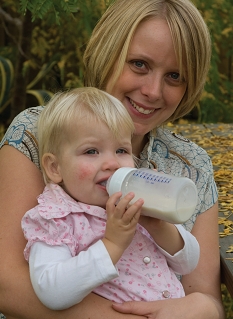 When it came to feeding her newborn daughter, Toni Pressman-Hyde planned ahead. She attended a breastfeeding workshop during pregnancy, and discussed it in depth with her midwife at her antenatal appointments. After Caitlin was born, she watched a breastfeeding video during her postnatal stay in hospital.
When it came to feeding her newborn daughter, Toni Pressman-Hyde planned ahead. She attended a breastfeeding workshop during pregnancy, and discussed it in depth with her midwife at her antenatal appointments. After Caitlin was born, she watched a breastfeeding video during her postnatal stay in hospital.
But nothing could prepare her for what lay ahead: A difficult labour followed by an emergency Caesarian and a big, hungry baby who developed colic early on.
"Caitlin latched herself on in the recovery room and fed immediately," Toni says. "It was a struggle at first, but we had it pretty much sorted out by the time we left hospital when Caitlin was four days old.
" Caitlin wanted to be fed every two hours, which Toni found very draining, and her efforts to spread Caitlin's feeds out to three-hourly were futile.
"She would feed really well," Toni remembers, "but then it would take at least half-an-hour to wind her, with her screaming the entire time. Sometimes it would take up to two hours, by which time she wanted to be fed again."
Having made it to six weeks, Toni felt sure that the worst was over, until Caitlin had a nasty reaction to her six-week immunisations and ended in up in hospital.
"Her heart rate was too high, her temperature was 41° and she was screaming from the fever," says Toni. "It was terrifying."
The stress and exhaustion of having a new baby, combined with the colic and the allergic reaction, took a physical toll on Toni and she ended up with a chest infection. It was this that led to Caitlin having her first bottle of formula.
"I felt like I needed one decent night's sleep to get back on top of things," she admits. "So my husband Brent gave her one formula-feed while I slept. Afterwards, Caitlin slept for seven hours!" Unwilling to credit formula with her daughter's longer sleep, Toni considered whether the "anti-colic" teat on the bottle had made the difference. So she decided to feed Caitlin expressed milk via the anti-colic teat.
However, expressing wasn't the solution she thought it might be. Despite investing in a good electric pump, Toni was unable to express enough milk for even one full feed for Caitlin, so she called her midwife for advice. "She came over to make sure I was doing everything right and sure enough, I was. I tried expressing more frequently, but over the next few days, no matter how often I expressed, I wasn't able to get any more milk out."
It was decision time. Caitlin was still having one bottle of formula at night, and a combination of expressed milk and breastfeeds during the day, and Toni was still battling the lingering chest infection.
"After she slept through the night for the first time since she was born, I started having doubts whether breastfeeding was worthwhile. The exhaustion was impacting my health in a way that affected my ability to care for my daughter. Brent and I had a long discussion over the pros and cons of each feeding option, and he said he was happy for us to bottle-feed Caitlin, as he could then do more for her than just bathe and change her. It was a hard decision, but one I felt we made in the best interests of our family."
Toni admits she did initially feel disappointed in herself, but this soon passed as she watched Caitlin grow and thrive on formula.
"I was sad that I wasn't able to give her the health benefits that breastfeeding offers, but to me, the quality of care I was able to provide once we started bottle-feeding outweighed the benefits of breastfeeding."
Toni also says that dealing with her own personal feelings of guilt were nothing compared to the battle she had to find information on the practical side of bottle-feeding. "Bottle-feeding parents have questions and problems, just the same as breastfeeding parents, and yet there are no support services available for bottle-feeding parents. I'd like to see more support and education for women who make the decision to bottle-feed."
Caitlin is now 22 months old and Toni says she doesn't regret her decision to give up breastfeeding. She says that while she will certainly try to breastfeed her next child, she won't put so much pressure on herself if things don't work out.
"I was never comfortable with breastfeeding. I stuck it out because I had certain expectations of myself, which were probably based on societal pressure. Women are made to feel selfish, or like a failure, for choosing to bottle-feed, and I think that's wrong. If breastfeeding isn't working, it's just not working."
Stephanie's story

Stephanie Topham is mum to Lucas (13 months). Lucas has been breastfed since birth. Before her pregnancy, babies weren't something that Stephanie Topham had spent much time thinking about. She always planned to have children; she just hadn't anticipated it happening so soon. So when she found out she was unexpectedly pregnant with Lucas, she went into panic mode trying to prepare herself for his impending arrival. One of the things she decided was that she wanted to breastfeed her baby for as long as possible.
"While pregnant, I started trying to prepare myself for breastfeeding by reading up on all the information available. But when I look back, I don't think I could have really prepared myself for the trials and tribulations that were going to accompany breastfeeding and becoming a parent."
Lucas' arrival into the world was far from textbook. After a 28-hour labour followed by a complicated ventouse delivery, Stephanie wasn't given an opportunity to establish breast-feeding with Lucas until more than three hours after he was born.
"I was terrified," she admits. "I'd never even held a newborn before, and I had to beg one of the on-call midwives to show me how to latch him. But latching proved difficult, and I ended up having to express colostrum and feed it to Lucas via a syringe."
Shortly after this, Stephanie was offered formula to give to Lucas, and, exhausted after the birth and not knowing the detrimental effects that introducing formula so early could have on establishing breastfeeding, Stephanie agreed. It wasn't until she arrived at the maternity unit several hours later that she realised he had been given 100ml of formula, and this would affect his feeding over the next few days.
"Lucas refused to latch on to the breast, but he also refused to take colostrum via a syringe or bottle. In hindsight, that's not surprising - he probably had a very full belly after such a big formula feed! It took three days before he began to show an interest in breastfeeding again."
However, Lucas's interest in feeding didn't make teaching him to latch any easier, and Stephanie began to use nipple shields, silicone guards designed to promote correct latching and protect damaged nipples. She used nipple shields until Lucas was three months old, by which time feeding was well established.
"Breastfeeding is definitely an experience in itself," she says. "In those first few months, I viewed it as more of a task than a privilege. It wasn't until around the five-month mark that I started finding it easier and found myself really looking forward to and enjoying breastfeeding."
Stephanie says she persevered with breastfeeding because she viewed it as the best thing she could do for her baby.
"Ultimately, I had made an informed decision," she says. "With our family history of allergies, I knew that breastfeeding offered Lucas the best possible opportunity to avoid allergies and eczema. I also view breastfeeding as the most convenient and hygienic alternative, not to mention the amazing bond that it creates. These reasons were the driving force behind my perseverance, despite the latching problems, mastitis and cracked nipples."
Stephanie says she was disappointed at what she sees as a lack of support from the midwives she had contact with, both before and after her son's birth. She believes that more support, advice and encouragement in the early days could lead to more women successfully establishing breastfeeding.
"I personally feel that breastfeeding isn't promoted enough and women aren't aware of all the wonderful bonding and health benefits that coincide with it. They don't make an informed decision," she says. "I also think a lot of women get discouraged easily at the first sign of cracked nipples or latching difficulties and move their baby straight onto formula without giving it a second thought. I think a greater knowledge of breastfeeding and its health benefits would deter them from giving up so easily."
Lucas is now 13 months old, and Stephanie plans to continue breastfeeding him until he is at least two years old. She also plans to breastfead any subsequent children she may have.
"My fondest memory is the first time Lucas fed from me properly, with his hand tightly wrapped around my little finger and his little eyes staring at me intently. The sound of him suckling away and the overwhelming bond and emotional pull that it created was intoxicating. That bond is still there 13 months down the track.
"Breastfeeding is the most selfless act any mother can do for their child. I thoroughly enjoy breastfeeding, and it has been one of the most exciting and fulfilling aspects of motherhood to date. For me, bottle-feeding never came into the equation."
Fact file
Unlike breast milk, powdered infant formulas are not sterile, and as such, carry a small risk of making your baby sick due to contamination with bacteria. You can reduce this risk by:
• New Zealand has strict regulations surrounding the manufacture and retail of infant formulas, and the New Zealand Infant Formula Marketers Association (NZIFMA) has developed a voluntary Code of Practice for its members. This helps to ensure that companies who manufacture and sell infant formula in New Zealand do so according to the principles set out by WHO. The unknown Asian brand you might find in your local dairy could be cheaper, but it may not adhere to these strict regulations and as such, there are no guarantees that it is comparable to local brands in terms of quality.
• There are several ways to do this, including using a microwave or electric steam sterilising unit, using a chemical sterilisation solution, or placing all equipment in a saucepan, covering with water and boiling for at least five minutes.
• Incorrect dilution of formula can make your baby sick. Too much powder can cause constipation. Too little can mean he or she is not getting enough nutrients. Bear in mind that different brands have different water:powder ratios, so if you switch brands, review the instructions.
• Never use expired formula. Also, most formulas have a fairly short life span (usually around four weeks) once you have opened the can. If your child is not using a lot of formula, it might help to write the date you opened the can on the lid so that you can make sure you don't use it once that life span has passed.
Further reading
• The Womanly Art of Breastfeeding, by La Leche League International, available from www.lalecheleague.org.nz
• Bottle Babies: A New Zealand Guide to Guilt-free Bottle Feeding, by Adelia Ferguson
References
• Infant formula ingredients: www.nutricia.co.nz and www.nurturebaby.co.nz
• La Leche League: www.lalecheleague.org.nz
• Ministry of Health Code of Practice for Health Workers: temarketingcode-healthworkers-online www.babyfriendly.org.nz/page.php?5
• http://www.who.int/topics/breastfeeding/en/ www.moh.govt.nz/moh.nsf/indexmh/breastmilksubstitu
• WHO/Unicef Baby Friendly Hospitals Initiative:

AS FEATURED IN ISSUE 2 OF OHbaby! MAGAZINE. CHECK OUT OTHER ARTICLES IN THIS ISSUE BELOW
